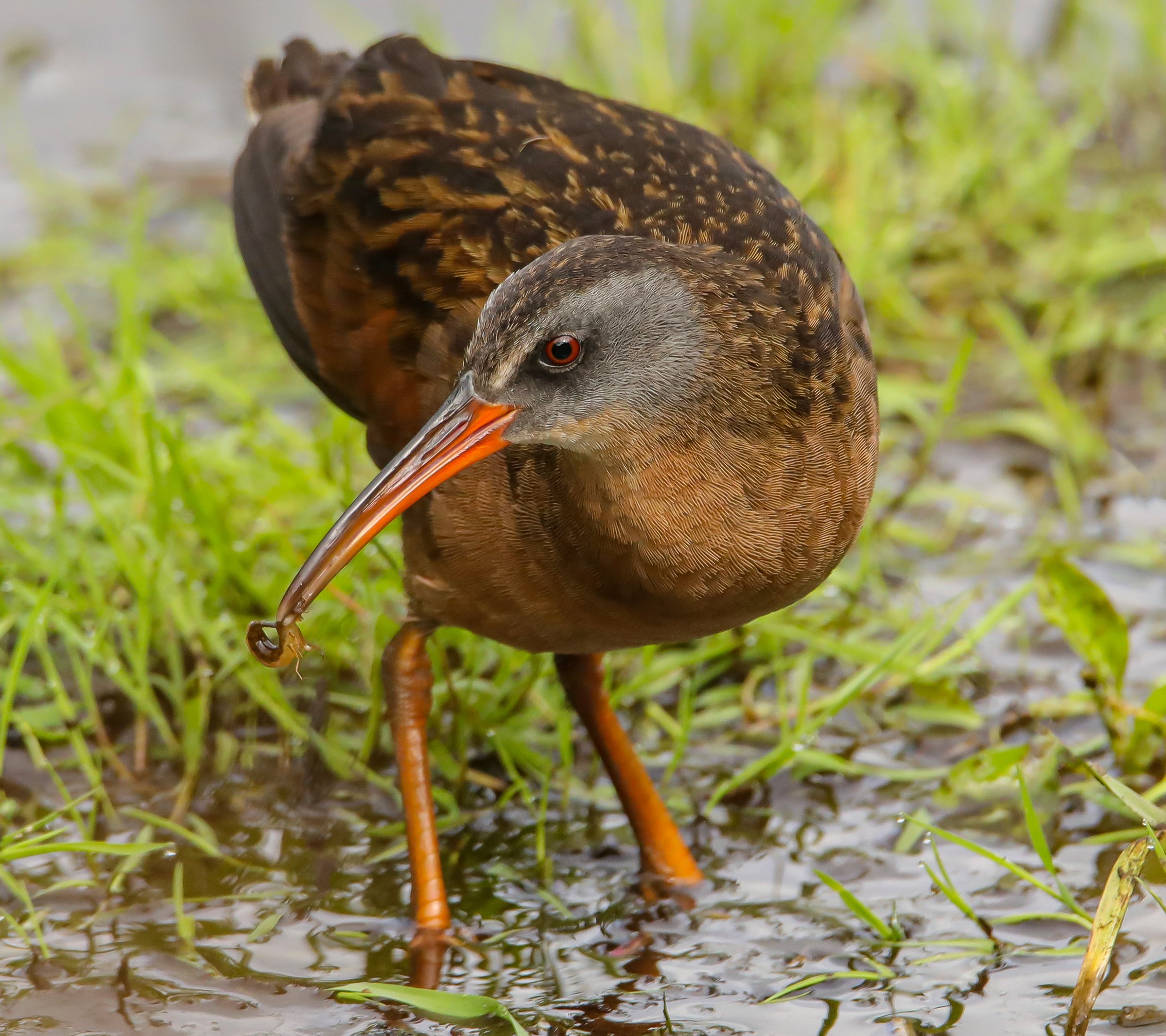Don and Margaret Larkin are Selected as Photographers of the Month in August
Don and Margaret Larkin were named the Eastside Audubon Society photographers of the month for the second time in August for a series of owl photos. The couple won the EAS Photography Group award in May.
You can see more of their work on SmugMug and Instagram.
Here is the story behind their owl photographs.
A Barred Owl Family
By Don and Margaret Larkin
Barred Owl #2 – Margaret Larkin, 450 mm, 1/30 sec, F 8, ISO 2500
In June, during our evening walk just before sunset, my wife Margaret and I were excited to hear a faint and familiar sound coming from the woods. This sound was a lot different from the usual chickadee and song sparrow calls that we normally hear. This was a soft hissing sound that could only come from a juvenile owl calling out to be fed by its parents. We spotted the owl and soon discovered it had a sibling nearby. Both parents were busy hunting for food while the owlets were practicing their flying skills and exploring the woods. Over the next couple of months, we were able to sit quietly and watch the owl family go about their evening routine. As the owlets grew, they became more confident and courageous. They appeared to be just as curious about us as we were about them. The parent owls didn’t seem to worry, and they were calm and relaxed while we were there.
What is it about owls that make even non-birders stop and gaze at them with amazement? Is it because we remember reading about them in children’s books or seeing them in movies as the wisest of all birds? Since Greek times, owls have been considered wise because of their heightened senses and their association with the night. Their night vision and superior hearing abilities allow them to easily catch prey and protect themselves from danger in the dark. They are mysterious birds who fly without making a sound, and whose presence can only be heard at night by their familiar hooting calls. Owls are also difficult to see during the day because their feathers blend so well with their surroundings.
Barred Owl #3- Margaret Larkin, 550 mm, 1/40 sec, f 6.3, ISO 2500
We are also fascinated with owls because they seem to have some human “personality”. Sometimes we see an owl’s behavior or body language and can’t help but imagine that they think the same way we do. Over the years, Margaret and I have focused a lot of our photographic attention on owls because we see them demonstrate behavior that we admire in humans, such as strength, patience, skill, caring, and family commitment. Perhaps it is these qualities that make owls so fascinating and wise.
The series of photos show the parent owls relaxing and showing affection, and one owlet waiting for the parents to feed him.
Barred Owl #1 – Don Larkin, 500 mm, 1/30 sec, F 6.7, ISO 2500
Barred Owl #4 – Don Larkin, 500 mm, 1/45 sec, F 5.6, ISO 8000
About the Eastside Audubon Photograph of the Month Award
The Photo of the Month award was instituted to recognize the work of the Photo Group Members. The group members meet monthly to show their latest photos and videos as well as share their knowledge of photography and wildlife. To attend the meetings, please join the group’s announcement list.



































